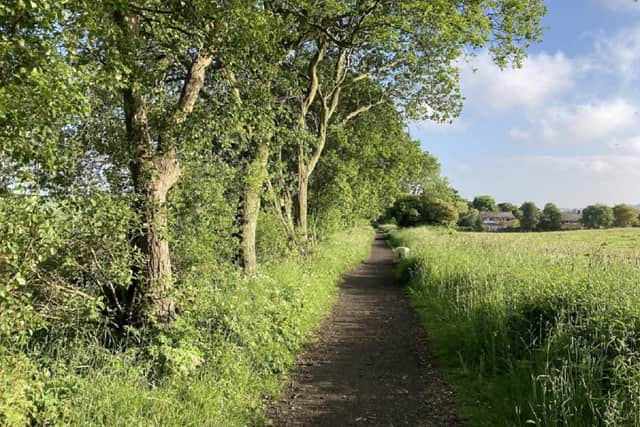Cinder Track: Frustration over closure of section of Yorkshire coast railway path between Scarborough and Whitby during peak summer season
The Scalby to Burniston stretch of the Cinder Track has been shut since mid-July and is not due to re-open until August 18 – a decision local residents have described as ‘unbelievable’ during school holidays.
The closure is in place due to the replacement of a footbridge at Burniston with one that is more accessible. A diversion has been put in place.
Advertisement
Hide AdAdvertisement
Hide AdNorth Yorkshire Council has also confirmed that a public meeting will be held in Burniston and Cloughton Village Hall from 6-8pm on August 2 to address concerns about the ongoing upgrade work to the Cinder Track.


As the track, now a popular walking and cycling route, follows the line of the old railway between the two seaside towns, it has various steep gradients and sections which are not disability-compliant.
The 2.5km section near Scarborough will be upgraded using government funding to ensure cyclists and wheelchair users benefit from a more convenient journey.
Other improvement works have already been completed on stretches between Whitby and Stainsacre and Scarborough to Scalby.
Advertisement
Hide AdAdvertisement
Hide AdCoun Keane Duncan, said: "The Cinder Track is a fantastic footpath with stunning views that connects Scarborough and Whitby.
"However, due to the very nature of the North Yorkshire countryside and the original purpose of the Cinder Track as a railway, there are some areas where it is narrow, involves steps or uneven terrain.
"By working with Sustrans and the DfT we are helping to overcome this challenge, improve the 21-mile public right of way and ensure everyone, including those in wheelchairs, people with pushchairs and those on bicycles, have better access.
“We are encouraging all interested parties to come along to the drop-in event to learn more about the scheme and ask any questions they may have.”
Advertisement
Hide AdAdvertisement
Hide AdNext winter, resurfacing of the track and a redesign of access barriers will get underway. The new smooth, even surface will improve drainage and provide wider passing points. Some closures and diversions will be required.
Cinder Track history
The line between Scarborough and Whitby was one of several serving the Yorkshire coast which closed during the Beeching axe period in the 1960s. By 1972, the track had been lifted and it became a designated greenway. Some of the old station platforms remain.
After years of neglect, a major restoration programme commenced in 2019. There are plans to eventually open a visitor centre, cafe and car park.
Given the revival of tourism on the Yorkshire coast since the 1960s, the closure of the Scarborough to Whitby line in 1965 now looks like a short-sighted decision.
Advertisement
Hide AdAdvertisement
Hide AdHowever, during its commercial life it was never operationally successful.
It opened in 1885, with a terminus at Larpool Hall near Whitby and stations at Hawsker, Robin Hood's Bay, Hayburn Wyke, Cloughton and Scalby before arriving at West Parade in Scarborough. The route includes the 13-arch Larpool Viaduct over the River Esk, which is now Grade II-listed and which is mentioned in the novel Dracula.
It was notoriously difficult to work and impractical. The junctions at both ends of the line - Prospect Hill in Whitby and Falsgrave in Scarborough - were engineered so that trains had to reverse direction to access the track. In the steam era, these movements were time-consuming and inefficient, and slowed down other trains. Scarborough Station was extremely busy during the summer season and the Whitby-bound services caused disruption.
The gradient of the route was also extremely steep, and the rails were slippery from sea mists and storms. Trains often stalled on the climbs and driving them in difficult weather conditions was challenging.
Advertisement
Hide AdAdvertisement
Hide AdEven after diesel services were introduced shortly before the line's closure - resolving the reversal issues at the junctions - there were still problems with the ascents and weather-related disruptions continued. Passenger numbers were never high outside of the peak tourist season and road links between the towns had improved.
The last engine to haul a service on the line is preserved on the North Yorkshire Moors Railway.
